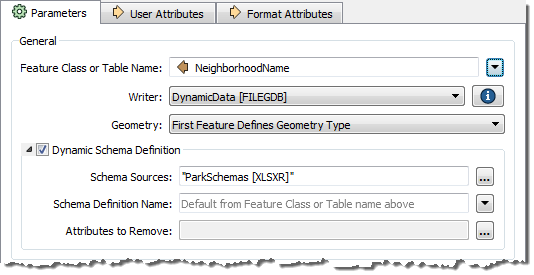Content

All such information is provided solely for convenience purposes only and all users thereof should be guided accordingly. Ordinary annuities are best used for payments because they have a lower present value than an annuity due. In this case, the future value of this annuity and the total cash value of Michelle’s investment over the course of 3 years would be $31,777.20. Another difference is that the present value of an annuity due is always higher than the present value of an ordinary annuity.
Insurance expenses are typically annuities due as the insurer requires payment at the start of each coverage period. Annuity due situations also typically arise relating to saving for retirement or putting money aside for a specific purpose. The payments are at the end of the payment intervals, and the compounding period and payment intervals are different P/Y \ne[/latex] C/Y. Calculate its value at the end, which is its future value, or FVORD. The payments are at the end of the payment intervals, and both the compounding period and the payment intervals are the same.
What is the formula for the present value of an annuity due?
N example would be $100 per month for 3 years beginning at age 21, where each payment is made at the end of the month. In order for Michelle to achieve this return, she would also have to make her first year’s investment of $9600 at the beginning of the year. This means she would need to have $9600 saved upfront to either invest or parse out towards the new rent for the house.

She is a Certified Educator in Personal Finance with FinCert, a division of the Institute for Financial Literacy, and a member of the Association for Financial Counseling & Planning Education . INVESTMENT BANKING RESOURCESLearn the foundation of Investment banking, financial modeling, valuations and more. Here, Mr. William is making an annual investment of $60,000 to achieve the goal of purchasing the property, which values around $3,000,000. The future value of an annuity due uses the same basic future value concept for annuities with a slight tweak, as in the present value formula above.
Compound Annual Growth Rate: Comparing Investments with the Excel CAGR Formula
Then there are the apartment rentals, the cellphone staggered payments, the lease payments on a car, etc. As long as there are recurring payments, that may be considered an annuity. For anyone working in finance or banking, the time value of money is one topic that you should be fluent in. Knowing exactly what it means to discount something or to get the future value of a particular investment vehicle is necessary to do the job. On the other hand, an “ordinary annuity” is more so for long-term retirement planning, as a fixed payment is received at the end of each month (e.g. an annuity contract with an insurance company).

Future value of an annuity due is used to predict the future value of a series of payments where the payment is made immediately at the beginning of the payment period. The payment at the beginning of the period is the main difference between an annuity due and an ordinary annuity. It’s because the time value of money will affect the outcome of an annuity. The time value of money means that money you invested now would have a greater value than an equal amount of money invested in the future. Consequently, an annuity due will always be of greater value than an ordinary annuity .
The Future Value and Present Value of an Annuity
It is important to note that, in this formula, the interest rate must remain the same through the series, and payment amounts must be equally distributed. If the payments differ during the series, or if the interest rates will change over time, there isn’t a formula to calculate the future value of that particular annuity due. Shows that the first cash flow is not discounted and that the discounted cash flows start at period 2. After factoring out the first immediate payment, the additional payments consist of an ordinary annuity with n – 1 payments remaining. An annuity due is an annuity with payment due or made at the beginning of the payment interval.
- Regardless of how you purchase an annuity, it’s great a way to supplement your pension or Social Security.
- Finding the product between one annuity due payment and the present value multiplier yields the present value of the cash flow.
- When you borrow, the sign of the payment is opposite that of PV.
- Learning the true market value of your annuity begins with recognizing that secondary market buyers use a combination of variables unique to each customer.
- More accurately, is what results when you take the limit of the ordinary annuity PV formula as n → ∞.
Usually, the key variable in the equation is the interest rate assumption, which could be severely misstated from the interest rate that is actually experienced in future periods. We can use the PMT function to calculate the monthly payments/investments. The second benefit is that annuity dues are usually less expensive than other annuities. This is because the insurance company does not have to wait for the end of the payment period to start receiving payments. Annuities that have begun paying out can be set up to continue the payments to a surviving spouse.
Essentially, they are ordinary annuities, but have no end date. There are some formulas to make calculating the FV of an annuity easier. Use this calculator to find the present value of annuities due, ordinary regular annuities, growing annuities and perpetuities. Most annuities offer a death benefit to protect the investment during the annuity due formula accumulation and annuitization phases. Some annuities may offer additional death benefits for an extra fee, increasing the benefit amount beyond the account’s value during the accumulation phase. Death benefits, and sometimes enhanced death benefits, protect family members by paying out the value of the annuity or more to beneficiaries.
How do you calculate due annuity?
- Annuity Formula = r * PVA / [1 – (1 + r)n * (1 + r)]
- Present Value of Annuity Due = Pmt x [ (1 – 1/(1+r)n) / r ] * (1 + r)
- Future Value of Annuity Due = Pmt * [(1 + r)n – 1] * (1 + r) / r.
The interest rate can be a tricky variable when you are working through this equation. To understand the present value of an annuity due, you should first have a solid understanding of what an annuity is and the two types. An annuity is a sequence of payments that are made over a specific period of time. The future value of an annuity is the total amount of money that will build up over time, including all payments into the annuity and compounded interest over its lifetime. Annuity due refers to payments that occur regularly at the beginning of each period.
